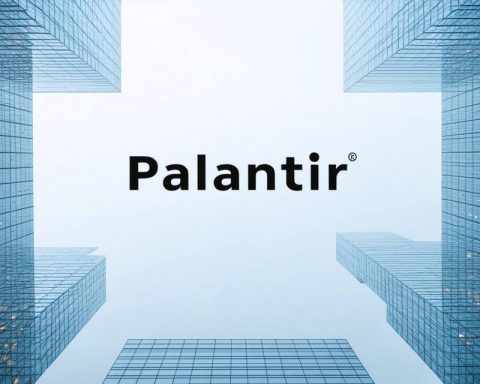- Palantir thrives as a leader in enterprise AI, with platforms like Gotham and Foundry driving significant revenue and inclusion in major stock indexes.
- Its expansive growth is powered by strategic use in both commercial ventures and geopolitical sectors.
- BigBear.ai offers adaptable modular AI solutions but faces challenges due to economic pressures and the loss of key clients.
- The company’s growth strategy includes acquisitions but has yet to achieve significant revenue breakthroughs.
- This contrast highlights the importance of timing, integration, and adaptability in the dynamic AI industry.
- Investors need to focus on strategic insights and pricing rather than just the potential allure of AI companies.
In the realm of enterprise AI, two players stand apart with starkly different fates. Palantir, a giant in data analytics, surges as a tech titan, providing invaluable insights from disparate data for government bodies like the CIA and major enterprises such as Airbus. Its signature platforms, Gotham and Foundry, cut through mountains of information to empower decision-making. This prowess has translated into accelerating revenue growth and profitability, a feat that catapulted Palantir into prestigious stock indexes like the S&P 500 and Nasdaq 100. Pacing ahead briskly, Palantir’s future prospects remain formidable, with expansion fueled by both commercial ventures and geopolitical demands.
Meanwhile, BigBear.ai strives for its place in the sun. This nimble contender champions agility, offering modular AI tools that seamlessly integrate into existing software ecosystems. BigBear.ai’s strategy hinges on adaptability—positioning its modules on edge networks and targeting growth through strategic acquisitions like AI vision developer Pangiam. However, its road has been rocky. Economic challenges, stiff competition, and the collapse of major client Virgin Orbit have throttled its ascent. Despite a modest outlook and ambitions under the leadership of former DHS head Kevin McAleenan, significant revenue leaps remain elusive.
A tale of contrasting trajectories, this rivalry demonstrates the importance of timing, adaptability, and systemic integration in the tumultuous world of AI technology. Palantir’s skyrocketing growth seduces investors despite its high valuation risks, whereas BigBear.ai grapples to harness potential amid mounting pressures. For those investing in the next big AI wave, the choice is less about sentiment and more about strategic insight—recognizing that paying the right price supersedes mere allure.
Will Palantir Innovate Fast Enough to Stay on Top in the AI Race?
How-To Steps & Life Hacks for Implementing Palantir and BigBear.ai Solutions
Implementing Palantir Solutions:
1. Define Objectives: Clearly establish the data-driven goals you aim to achieve with Palantir’s platforms, such as improved decision-making or enhanced intelligence gathering.
2. Select Appropriate Platform: Choose between Palantir’s Gotham for secure, governmental applications and Foundry for commercial analytics, aligning the platform’s capabilities with your specific needs.
3. Data Integration: Use Palantir’s data connectors to combine data from various sources, ensuring comprehensive and accurate analytics outputs.
4. Leverage Palantir Tools: Utilize the built-in analytics, AI, and machine learning functions to generate actionable insights from your integrated datasets.
5. Continuous Improvement: Regularly update your data inputs and recalibrate your analytical models based on feedback and changing strategic objectives.
Implementing BigBear.ai Solutions:
1. Identify Needs: Determine key areas where agile AI-driven insights could improve operational efficiency in your organization.
2. Select Modules: Pick relevant BigBear.ai tools that align with your systemic requirements and can plug into existing software ecosystems seamlessly.
3. Edge Network Deployment: Implement AI tools on edge networks to enhance speed and latency, particularly for applications requiring real-time data processing.
4. Adapt Over Time: Keep an eye on emerging AI trends and adjust your use of BigBear.ai’s flexible modular tools to accommodate new technologies and solutions.
5. Evaluate Outcomes: Continuously assess the performance of AI solutions and make necessary adjustments to improve efficacy and meet evolving business objectives.
Real-World Use Cases
– Palantir: Widely used by government agencies for counterterrorism, emergency response, and pandemic management. In commercial sectors, it’s used for supply chain optimization and customer relationship management (CRM) by firms like Airbus.
– BigBear.ai: Well-positioned in the defense sector, offering simulation software for mission planning and threat assessment. It’s also expanding into logistics and financial risk management by customizing AI solutions for industry needs.
Market Forecasts & Industry Trends
– Palantir Outlook: The demand for big data analytics in defense, healthcare, and financial services is expected to propel Palantir’s growth. According to MarketsandMarkets, the Big Data analytics market is projected to grow from $189 billion in 2019 to $274 billion by 2022.
– BigBear.ai Outlook: Despite current challenges, as industries increasingly seek adaptable and scalable AI solutions, BigBear.ai’s modular approach may gain traction in sectors like transportation and logistics, where edge computing is critical.
Security & Sustainability
– Palantir: Known for its robust data security protocols, aligning with government security standards to protect sensitive information.
– BigBear.ai: Focuses on sustainable AI development, with security measures integral to its modular offerings, prioritizing scalable solutions with minimal environmental impact.
Insights & Predictions
– Investment Insights: Investors should focus on companies like Palantir, which have proven resilience and strategic direction. However, high valuation risks require cautious entry points. Conversely, BigBear.ai represents an investment with potential upside, contingent on overcoming current challenges.
– Industry Predictions: AI integration will become more widespread across various sectors, with a focus on modular and cloud-based solutions like those offered by both Palantir and BigBear.ai. Augmented intelligence, combining AI with human expertise, is expected to lead the next wave of AI development.
Pros & Cons Overview
Palantir Pros:
– Leading data analytics technology
– High-value government contracts
– Strong financial standing and market presence
Palantir Cons:
– High valuation risk
– Privacy concerns due to government affiliations
BigBear.ai Pros:
– Flexible, modular AI solutions
– Potential for rapid integration in existing systems
– Expanding product offerings through acquisitions
BigBear.ai Cons:
– Economic instabilities affecting growth
– Competition from larger, established players
Actionable Recommendations
– Investing Tips: Potential investors should evaluate Palantir’s and BigBear.ai’s financial health, market positioning, and technological advancements before making any commitments.
– Adoption Strategy: Organizations looking to adopt AI solutions should assess the extent of change management required, particularly cultural shifts within the organization that may be necessary to fully leverage AI technologies.
For more information on enterprise AI solutions and trends, visit Palantir and BigBear.ai.









